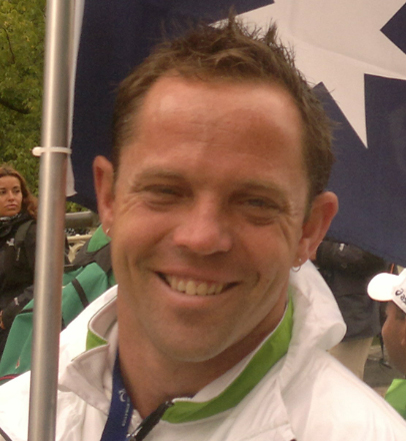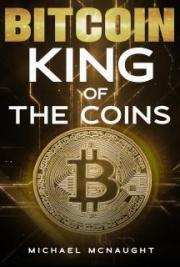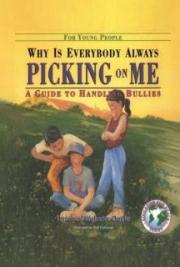Steffi de Jong
Steffi is co-founder and Impact Director of
Playable. She is passionate about using the power of sport for social change. Steffi co-founded PlayAble while still at university.
After receiving her Master degree in Adapted Physical Activities in Leuven, Oslo and Stellenbosch and a Master degree in
Implementation and Evaluation of Sport Projects at the Paris 10 University, she was committed to continue impacting lives of people with disabilities.
43
As her main motivation, Steffi refers to the enormous changes she has seen in the children who participate in PlayAble. "A child that used to be neglected by the community can develop into someone with a disABILITY who is confident and aware of his/her rights just in a few weeks of sport participation. Isn’t that amazing?!"
In her free time, Steffi loves to be active, from playing soccer and squash to mountain biking and skiing. When she is not working or playing sport, you’ll find her enjoying life with family and friends.
44
Peter
Hi Steffi - in your experience, what do you understand about inclusion of people with disability in sport and physical activity?
Steffi
What I understand about inclusion and what we try to teach in PlayAble to our coaches and instructors, is that inclusion is all about providing a choice to people with different abilities to play together in the way that they want. For us it’s not necessarily one type of activity. It’s really about enabling trainers and coaches to actually adapt existing games in such a way that everyone that comes out onto the field can play together.
Whether it’s kids without disabilities or kids with different disabilities, it doesn’t matter, kids with all different abilities, they actually get a chance to play together. To play together at the highest level of their performance, so that each and every one of them is still challenged in a sense that they can reach their highest level.
45
Peter
You’ve worked in some challenging environments. What do you think are the major challenges to inclusion?
Steffi
I think that one of the biggest challenges that we are facing in the African countries that we are working with is the tendency to really stick to rules. For example, if you are going to do Volleyball you must stick to all the rules, so if a person cannot ‘set’ then they can’t join, and that’s it! That’s the mind-set that lots of people have.
That for us is the biggest challenge. We need a change in mind-set. To try to enable people to be creative and letting them try with different rules and different equipment and using different instructions. That takes a while and is one of the biggest challenges that we have.
The second one is the attitudes. Some of the initial attitudes can be really negative. You know as you have been to different countries. There’s an attitude that people with disabilities just can’t play sports because they are in a wheelchair, for example. Their disability is equated to their inability in a sense. That is a challenge for inclusion at the first point, because it’s not only other people that 46
believe the kids with disabilities don’t have ability, it’s the kids themselves.
If you have been locked up in your house for years and you have never had the opportunity to play, then you don’t have the confidence in your own abilities. So what we see in the beginning, very often, is that fully inclusive activities can have a very negative effect, because kids with disabilities can get very insecure playing with their able bodied peers.
The other kids are like “hey, they can’t play with us”. So I think that is a big challenge. We try to tackle it by doing it step by step. Those are the two biggest challenges that we face.
Peter
We will certainly explore attitudes a bit more. But I was interested in ‘the rules’. Do you think rules are one of the most restrictive things about sport, particularly for people who are more used to the rules that govern sport.
47
Steffi
I think for those that do physical education training they are so focused on the rules. For example, their exams are focused on the rules of the games. So I think for them it is even more of a bigger challenge to change their mindset as opposed to others who are not so familiar with the games. They are open to adapting at first because they simply don’t know the rules in the first place. Of course there are exceptions because there are teachers who are trained but that ‘get it’ very fast and they are really creative. But there are also some that really have difficulties in sticking to the rules.
Peter
Now, I’m really interested to know. You have worked in Africa and in Europe. Do you see any differences between how creative people are in these countries?
Steffi
From my experience the biggest difference in Europe and Africa is perhaps the educational system. People in Europe are forced much more to question and think creatively about different solutions, whereas in Africa, at least in the areas that we have worked, the teacher is 48
there to tell the rules and that is what you do. That is my own interpretation, but it is what I think is the biggest cause of this difference. They are not really taught how to question and think creatively. Of course, that’s a generalization and doesn’t count for everyone.
Peter
Yes, I understand the generalization and see what you mean. Can I ask you about attitudes. Are there differences you’ve seen into attitudes towards inclusion and how are these linked to culture?
Steffi
Yes, definitely. I think this is why going to Africa was such an eye opener for me. In many African countries there are still many cultural beliefs around disability.
Disability as a curse and the punishment of god. It’s something very negative and lots of parents feel ashamed of their kids. We work with a lot of kids who are in orphanages, but they are not orphans. It’s just that their parents won’t have anything to do with them.
There are also kids that have been locked in their house for many years and even neighbors don’t know they 49
exist. It is because it is seen as some kind of failure of the family. I think that if you are more in the urban areas it’s changing and getting better, but in the rural areas there is still a lot of stigma attached to disability.
Peter
That’s very interesting. Do you think that sport can help change that?
Steffi
Oh yes - otherwise I could definitely stop working for PlayAble right now! This is the whole reason we started PlayAble and why we continue working because we really believe in the power of sport to changing those attitudes. To give you some examples, in Kenya we worked in a community, in one of the slum areas of Nairobi, where we had about 20 kids just staying at home and we got them playing activities every week in community fields. In the beginning, the community members didn’t quite know what was going on, but over the weeks we really saw that their attitudes changed. We saw people coming out to watch and being surprised. At one point we decided to invite the local school, their teachers and the local leader. When they saw the 50
activities they were able to see that those kids really do have abilities. So they thought they should get a chance to go to school. The activities convinced people that those kids do have abilities and they can do lots of things if you just give them a chance. In the end they opened up a whole new classroom for those 20 kids so that they are now going to school.
That’s just one example but it’s typical of what we have been experiencing over the last few years in all the areas we have worked in. It really is changing attitudes, and the impact reaches much further than on a personal level.
It’s also on a societal level that things are changing.
Peter
That’s a great example of the power of sport. What is the reaction of children without disabilities to what you do?
Steffi
At the beginning they have ‘big eyes’ and are staring a bit! They are thinking “what’s going on here and who are those kids?” There might be a bit of giggling and not taking it all that serious, but then, for example, in Uganda we started some parallel activities first to help the kids 51
get to know each other first. After some weeks we really saw that, step by step, they started to talk to each other and started to kick some balls with each other. Now we are in the position that some of the kids are in completely inclusive teams. It takes time, but you really do see that friendships are being made between the kids.
Peter
Now, I’m assuming that you use local equipment too, as its important to just use what people are used to. Do they manage to adapt and modify ways of doing things with different kinds of equipment too?
Steffi
Yes, we do use as much as possible local equipment. For example, we have introduced in Uganda boccia. There were no boccia balls available so we just used whatever we could as balls, even stones. I think even the coaches get more and more creative too, as we have to use what is available.
Peter
One of the discussions we’ve had with the other people on this project is the idea that inclusion is sometimes 52
perceived only as activities that are for people with and without disabilities together. And inclusion does not mean disability specific type activities. Is that perception something you have seen in African countries?
Steffi
In the countries that we work those terms are not known.
We are trying to teach different ways of inclusion. But, basically I think that’s more of a personal thing. I don’t really care which name we give it. I think inclusion is not necessarily adapting a game for kids without disabilities, so that kids with disabilities can be included.
For me it can be the opposite way too. A game for kids with disabilities that can include kids without disabilities.
To me, it’s not just about adapting activities to include kids with disabilities. It’s more about creating an opportunity for all kids to play together, whether it’s so-called ‘reverse’ integration, when kids without disabilities play boccia, for example.
I understand that there is a difference and I understand that some people might argue that real inclusion is having kids with disabilities all playing together in mainstream soccer, for example. You know, I think it is 53
only really in English speaking countries where there is this difference between inclusion and integration. For me, it’s more important that there is a choice and that they can play whatever they want at the level that they like.
Peter
So you are saying that inclusion is really only about
‘opportunity’ and ‘choice’.
Steffi
Yes, I think for me that is the most important. We could also see inclusion as being in ‘sport’, whether that is being included in Paralympic sports, or being included in unified sports. But for me, the important thing is that there is a choice. If the kids don’t feel comfortable playing soccer together, then there is still an option to play in wheelchair basketball, and that is the case for both kids with and without disabilities. I don’t have a disability, but I play wheelchair basketball and I felt I was included in that team. I’m not sure I am making myself clear, but to me the differences in phrases and words don’t really matter. It’s more the final outcome that counts for me.
54
Peter
Yes, it’s the global language isn’t it! Everyone understands when an opportunity is created. That’s fantastic Steffi. To conclude, I’d just like to explore a little more the kinds of attitudes, fears and approaches you have come across, because it is a bit different and you’ve seen first hand the power that sport can have on those communities. How fast does this transformation process happen and when do you start seeing results?
Steffi
I think that depends a lot on the background. For example, in rural areas the attitudes are still a bit more negative, so it takes longer there than in the cities.
Obviously, it varies from person to person but I’ve really been surprised by how short a time it takes. Even during our course for coaches of 4 to 5 days, there’s coaches that have never worked with kids with disabilities and they come in and say things like “oh god, why did we chose you and why are you in this course?” But over the four days when they get this experience in working with those kids, you really can get some great changes.
55
They really realize that their attitudes were wrong. For adults, maybe it goes faster than for kids. We do see coaches after the course immediately have great attitudes and they really want to try their level best to help everyone that comes their way. For the kids, in Uganda it was pretty fast too. If you only have a few kids, it only takes a few, to go and talk to the kids with disabilities.
Then the others will follow. We do try to pick a few role models, both for kids with and without disabilities, so you can connect them up better. This promotes a lot of interaction.
A funny part is also the parents. In the beginning they are also skeptical. Having their kid playing with someone with a disability. But at the end of the season you really get their reactions. They are completely changed and they realize that these kids also play soccer. They are pretty amazed initially. One of the kids in Uganda was top scorer, he was born without legs, so he was playing soccer with his hands, among kids that were playing with their feet. It was amazing and he is such a powerful role model for all those parents. He became the rock-star of his community.
56
We’ve already talked about the power of sport. It is way more powerful than anything we can talk about. Just seeing those kids in action really helped.
Peter
Yes, that’s a great place to stop the interview I think.
You’ve done a fantastic job so it’s good to finish on such a positive note.
Steffi
Thanks Peter, I really enjoyed it.
Peter
Thanks Steffi, and we’ll speak soon.
_______________________________________
Take a look at PlayAble by visiting their site at:
http://www.play-able.org/
57


Hamish Macdonald
Hamish Macdonald is a passionate advocate, speaker, administrator, educationalist and leader in the field of sport for people with disability. Now in the ‘veteran’
athlete category, he has represented Australia in a number of Paralympic Games and World Championships in athletics.
Hamish currently works for the Australian Sports Commission in an Assistant Director role, combining that with his many athletic commitments. He is a skilled educator and has been instrumental in designing and delivering education programs that have gone all over the world. He has organized and delivered on many disability education workshops across Australia and overseas, including Asia, the South Pacific, the Caribbean and Africa.
58
Hamish manages to combine an in-depth knowledge of high performance sport with an acute understanding of the issues facing community participation, all with a keen sense of humor and enthusiasm.
59
Peter
What do you understand by inclusion in sport and physical activity for people with disability?
Hamish
I think it is all the things we know. Providing opportunities for people to have the choice to participate in parts of the community that they want to participate in.
It's about reducing the barriers, whether these are perceived barriers or real barriers.
The work of inclusion, is identifying what the barriers are and then doing the work collaboratively, so that everyone has a sense of ownership about reducing those barriers.
Peter
Can you give us an example of what a barrier might be?
Hamish
Some of the biggest barriers are the attitudinal barriers.
On both sides of the fence. The attitudes of the person trying to access sport, these can be huge barriers.
Whether they are barriers of the people themselves, or 60
the people that facilitate the opportunity, such as their family members or care providers.
Then there are the attitudes of the community more generally, they can be huge barriers too.
Peter
If you want to break down these barriers, how do you influence peoples’ attitudes?
Hamish
Immersion. I think people can only understand something by being immersed in it. The immersion really has to happen in a non-deliberate way so that it is just part of life. People can't be expected to understand something they have never experienced. Any type of immersion is valuable. The opportunity to explore what that immersion experience was about, in a discussion format so that people can discuss what their experience was like, this helps people shape how they think.
61
Peter
Do you think that this immersion, this experience and exposure to disability for the first time, can be negative and positive?
Hamish
Yes, if it is done in a controlled way, then it has to be done very carefully and in a non-deliberate way, or almost incidental way. When we've seen this process, for example, helping people experience disability by using wheelchairs, then this can have a negative impact on longer term attitudes. But if you are able to immerse someone in the experience of disability in a non-deliberate way, then you can positively influence attitudes.
It's almost like people are doing it, are experiencing it, without calling it a particular thing, and then it becomes part of their everyday behavior.
Peter
So, it's trying to influence everyday behavior?
62
Hamish
Yes, absolutely, it's influencing everyday behavior in a non-labeled and non-deliberate way. The difficulty here, as educators, is that you have to actually be quite deliberate in how you do that.
Peter
As educators then, are there ways of speeding that process up?
Hamish
I think there are. I think effective inclusion is like learning a language. For example, if you are taught Japanese all your life, but never have the opportunity to use it, then it is of limited value. So, the typical education process for learning a language is that you are deliberately exposed to it as part of a school curriculum.
Then you have to make a choice as an adult to carry that on or not, 99% of people don't, so their understanding of the language is limited to what they can remember from a long time ago.
So, the way people get exposed to inclusion is important, as is the way people go about finding practical solutions.
63
It's the opportunities that people have to put it into practice that is important. Unless they have an immediate and ongoing opportunity to put it into practice then it can be lost. So, as educators, whatever behavioral change you are trying to make should focus on deliberate and ongoing exposure to that situation.
That's a tough thing to try to do, to put people in front of people with disabilities on an ongoing basis.
Peter
How do you develop a sense of ownership around inclusion then?
Hamish
To me it has to be success. You have to build your outcome to be a success. If the overall outcome of being inclusive is success, this is a global outcome rather than an individual outcome that says "if we behave this way then Peter is going to be included more effectively". If it is a global outcome then people will start to own it.
The challenge here is that if everyone owns it then it is nobody's responsibility. There has to be a balance 64
between collective ownership and individual responsibility here. The overall outcome is the most important, but so is individual responsibility.
Peter
So the overall outcome, inclusion, becomes just everyday practice. It's the way people do things.
Hamish
Yes, it's a culture. It isn't about attending a one off education session and ticking a box and feeling that you have done your bit. It's about what we want to feel like when we come to work everyday, and what do we want to feel like we are achieving by living this culture. So in some ways, it has to be an internal choice. Not something that we can tick off and say we have done. So this is a grey space to work in, but in many ways there are more tangible outcomes in the long term.
The effect will be that people have better experiences and make choices to come back and revisit that activity or organization. The culture will attract you rather than you coming back for your own personal experience.
65
Peter
How far are we away from achieving that?
Hamish
Oh, we are miles from that happening! But there are some shining examples of when that approach is taken it can work. It's difficult to describe, but on the one hand you know exactly what you want to do, and on the other you do not want to portray that's what you are doing.
You, kind of, don't want to label it an inclusive activity.
Peter
So again, if we are teaching about inclusion, we need to be conscious of the broader goals of doing things this way?
Hamish
It is a kind of 'covert operation'. For every piece of work that's labeled an inclusive activity, then there's always 100 other bits of work that go on below it. People need to feel attached to what you are doing, if they are not, they are not going to be attracted to it.
66
Whatever service or activity you are offering, if people cannot see themselves already there, then they are unlikely to come back through the door.
Peter
It's like an incidental effect of inclusion. To put in place things that cause the incidental effect of inclusion.
Hamish
Because it is covert. Which is an effective way to do it.
It's a real skill to teach this.
Peter
What do you think then, are the major challenges of embedding that kind of approach into the practices of a regular sports coach, who has never worked with a person with a disability before?
Hamish
The challenges are that you are working with someone with little experience and who is structured around the rules of sport. There is also too much busy work that happens within a local sporting environment. Someone has to run the kitchen or look after first aid. So the longer 67
term softer stuff has to be embedded into everyone’s business. And someone needs to take responsibility for this, for embedding inclusive practice into everyone’s business.
It's messy, but for it to be everyone’s business then someone has to make it everyone’s business. Someone has to be clever enough to do this so that it doesn't look like an obligation and it’s not a course that you begin and complete and understand, and therefore don't need to do anymore. So there's a danger with a deliberate and specific education process, that it’s easy to say "yes, I've done that, therefore I am inclusive". So in order for it to be ongoing, it has to be in the subconscious. So for it to be there, there must be someone that is outside the 'busy space' dedicated to putting it into the subconscious.
Those people are rare, and those people that are capable of doing it well are often not available at a local level.
Peter
It's a funny irony, you want to teach about inclusion but you don't want to at the same time!
68
Hamish
Yes. And there is a place for teaching about inclusion because you need an initial level of exposure. You need the people waving 'the big flag' saying “this is what you need to learn”. But the challenge, after that initial exposure, is to embed it. And the only way to do that is for people to 'live it' when they go back to where they operate. So it needs someone clever enough to embed inclusion into the day-to-day operations of an organization.
Peter
Excellent. I think we will leave it there Hamish. I really appreciate your time and thoughts here. Thanks very much.
Hamish
Not a problem - thanks.
69
Thanks to our contributors to What Is Inclusion?
If you have read this book and you are not a member of The Inclusion Club, then we think you have enough interest to join. It’s free and takes a couple of minutes.
You can sign up here:
http://theinclusionclub.com
70









